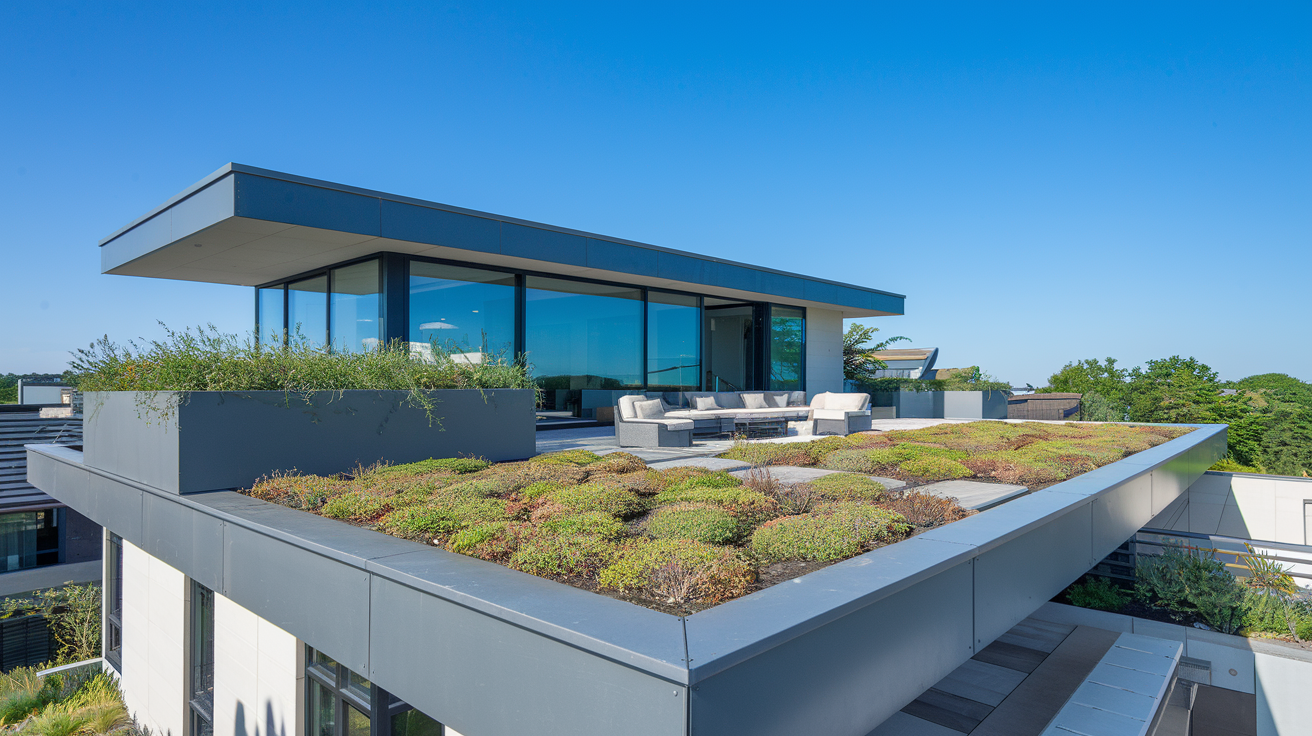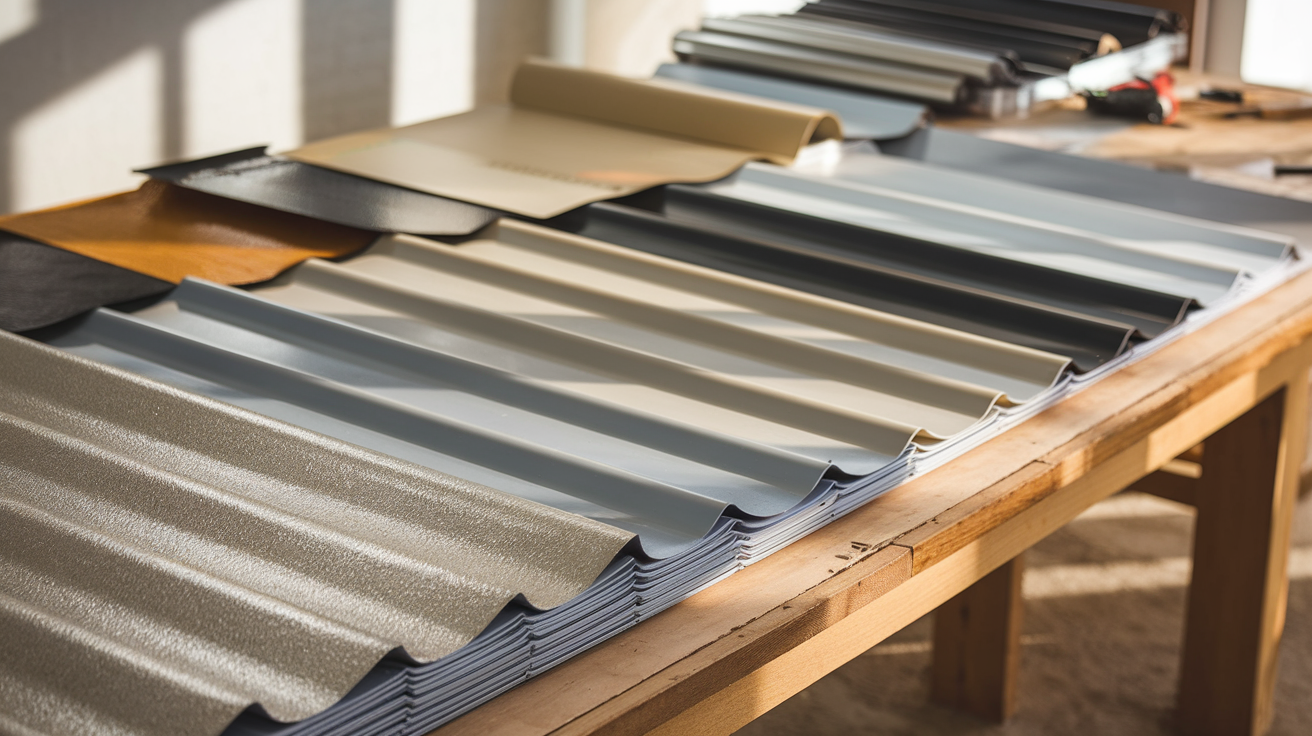Flat Roof Maintenance Guide: Essential Tips to Prevent Costly Repairs
Is your flat roof showing signs of wear, or are you concerned about potential water damage? You're not alone. Nearly 20% of residential roofs develop problems within the first year of installation, with flat roofs being particularly vulnerable to issues like ponding water and membrane damage. For homeowners with flat roofs, understanding proper maintenance isn't just about protecting an investment – it's about preventing costly repairs and ensuring your home stays dry and secure.
This comprehensive guide will walk you through everything you need to know about maintaining your flat roof, from identifying early warning signs to implementing preventative measures that can extend your roof's lifespan. Whether you're dealing with drainage issues, considering material upgrades, or simply want to protect your investment, you'll find practical, actionable solutions to common flat roof challenges.
Learn how to spot potential problems before they become expensive repairs, understand the impact of your local climate on maintenance needs, and discover professional tips for keeping your flat roof in top condition. With proper care, your flat roof can last 20-40 years – but only with the right maintenance strategy.
- Introduction to Flat Roofs
- Specific Challenges of Flat Roofs
- Solutions for Common Flat Roof Challenges
- Cost Implications and Regional Considerations
- Long-Term Maintenance Tips for Homeowners
Introduction to Flat Roofs
Flat roofs are increasingly common in residential construction, offering a sleek, modern aesthetic and maximizing usable space. They are particularly popular in urban areas where space is at a premium. While they offer unique advantages, flat roofs require specific maintenance considerations compared to sloped roofs. Understanding these needs is crucial for homeowners considering this roof type. For example, routine inspections and prompt repairs are vital for preventing leaks and ensuring the longevity of a flat roof. Get Your Roof Assessment

Understanding Flat Roofs and Their Popularity
Flat roofs are defined by their low slope, typically less than 10 degrees. This subtle incline allows for drainage while maintaining a flat appearance. Their design offers cost-effective construction and a contemporary look that complements modern architectural styles. The rising popularity of flat roofs stems from their efficient use of space, especially in densely populated areas. This design allows homeowners to create rooftop gardens, install solar panels, or simply enjoy extra outdoor living space. Advances in roofing materials have also contributed to their increased adoption, with new materials offering improved durability and energy efficiency. Learn more about roof maintenance
<div class="table_criteria" role="table" aria-label="Flat Roof Material Comparison">
<div role="rowgroup">
<div role="row">
<div role="columnheader">Material</div>
<div role="columnheader">Lifespan</div>
<div role="columnheader">Advantages</div>
<div role="columnheader">Disadvantages</div>
</div>
<div role="row">
<div role="cell">Modified Bitumen</div>
<div role="cell">15 Years</div>
<div role="cell">Flexible, Easy Installation</div>
<div role="cell">Shorter Lifespan</div>
</div>
<div role="row">
<div role="cell">TPO</div>
<div role="cell">30-40 Years</div>
<div role="cell">Durable, UV Resistant</div>
<div role="cell">Higher Cost</div>
</div>
<div role="row">
<div role="cell">PVC</div>
<div role="cell">30-40 Years</div>
<div role="cell">Durable, UV Resistant</div>
<div role="cell">Higher Cost</div>
</div>
<div role="row">
<div role="cell">EPDM</div>
<div role="cell">25-30 Years</div>
<div role="cell">Affordable, Weather Resistant</div>
<div role="cell">Vulnerable to Punctures</div>
</div>
</div>
</div>Common Materials Used in Flat Roof Construction
Several materials are commonly used in flat roof construction, each with its own set of advantages and disadvantages. Popular choices include modified bitumen, TPO (Thermoplastic Olefin), PVC (Polyvinyl Chloride), and EPDM (Ethylene Propylene Diene Monomer). Modified bitumen is known for its flexibility and ease of installation. TPO and PVC offer exceptional durability and UV resistance, with lifespans ranging from 30-40 years. Modified bitumen roofs typically last around 15 years. EPDM, a rubber-like material, provides excellent weather resistance and affordability, making it a versatile option for various climates. Choosing the right material depends on factors like budget, desired lifespan, and local climate conditions.

Advantages and Disadvantages Compared to Sloped Roofs
Flat roofs offer distinct advantages over sloped roofs, especially regarding space utilization. The flat surface provides valuable space for HVAC equipment, rooftop gardens, or recreational areas. However, flat roofs require more frequent maintenance due to their susceptibility to water pooling (ponding). Regular inspections, debris removal, and prompt repairs are essential to prevent leaks and other water-related damage. For instance, homeowners should regularly clear leaves and debris to ensure proper drainage. Sloped roofs, on the other hand, shed water more effectively, requiring less maintenance. However, they offer less usable rooftop space. Ultimately, the best roof type depends on individual priorities and the specific needs of the building.
<div class="comparison-box" role="region" aria-label="Flat vs Sloped Roofs">
<div style="display: flex; justify-content: space-between;">
<div style="flex: 1; margin: 10px;">
<h3>Flat Roofs</h3>
<ul>
<li>Maximize usable space</li>
<li>Modern aesthetic</li>
<li>Requires more maintenance</li>
</ul>
</div>
<div style="flex: 1; margin: 10px;">
<h3>Sloped Roofs</h3>
<ul>
<li>Efficient water drainage</li>
<li>Less maintenance</li>
<li>Limited usable space</li>
</ul>
</div>
</div>
</div>Specific Challenges of Flat Roofs
Flat roofs offer unique advantages, but they also present specific challenges that homeowners must understand to ensure their roof's longevity and minimize potential repairs. Unlike sloped roofs, which efficiently shed water, flat roofs are more susceptible to water damage and require more proactive maintenance. Understanding these challenges is the first step toward effectively maintaining a durable and reliable flat roof. Consider scheduling a Get Your Roof Assessment to identify potential issues early on.
Water Pooling and Ponding Issues
One of the most common challenges with flat roofs is water pooling, often referred to as ponding. Ponding occurs when water accumulates and stagnates on the roof's surface for 48 hours or more. This can happen after rainfall, snowmelt, or even runoff from rooftop equipment. Ponding water can compromise the roof's integrity over time, potentially leading to leaks and structural damage due to the added weight and prolonged moisture exposure. While modern roof membranes are designed with water-resistant materials, meaning ponding isn't always an immediate emergency, it's crucial for homeowners to ensure proper drainage.
Addressing Ponding Issues
Effectively addressing ponding often involves regular inspection and cleaning of drains to prevent blockages that contribute to water accumulation. Additionally, some flat roofs are designed with a slight slope to facilitate water runoff. Learn more about roof maintenance for additional preventative measures.
<div class="callout-box" role="alert" aria-label="Ponding Water Prevention Tips">
<h4>Ponding Water Prevention Tips</h4>
<ul>
<li>Regularly inspect and clean drains</li>
<li>Consider adding a slight slope during installation</li>
<li>Install additional drainage systems if necessary</li>
</ul>
</div>Membrane Damage: Punctures, Tears, and Blistering
Flat roofs typically feature a waterproof membrane, which can be single-ply (like TPO or PVC) or modified bitumen. Single-ply membranes like TPO and PVC usually last 25-30 years, while modified bitumen lasts around 15 years. Other less common materials include EPDM and SBS-modified bitumen. Regardless of the material, these membranes are vulnerable to damage like punctures, tears, and blistering.
Causes of Membrane Damage
This damage often stems from foot traffic, falling debris, or severe weather events, such as hail or strong winds carrying debris. Regular roof inspections, ideally at least annually, and prompt repairs are essential to prevent small issues from developing into major problems. On average, localized repairs are often necessary across approximately 1.5% of the roof area annually.
Insulation and Thermal Expansion Challenges
Insulation plays a vital role in flat roof performance, but it also presents unique challenges. Insufficient insulation can decrease energy efficiency, resulting in higher utility costs. Effective insulation helps regulate indoor temperatures, reducing the need for excessive heating or cooling.
Thermal Expansion and Contraction
Another challenge is thermal expansion and contraction. Temperature fluctuations cause roofing materials to expand and contract, potentially leading to cracks or warping. Using high-quality insulation and ensuring proper installation are key to mitigating these risks. The growing importance of flat roof insulation is reflected in the market projection of $22.9 billion by 2030.
Solutions for Common Flat Roof Challenges
Flat roofs present unique challenges for homeowners. These roofs require specific solutions to ensure long-term performance and prevent costly repairs. While flat roofs offer advantages like usable rooftop space and a modern look, they are more susceptible to problems like ponding water and membrane damage. Addressing these issues proactively is key to maximizing the lifespan of a flat roof.
Implementing Effective Drainage Systems
One of the biggest challenges with flat roofs is managing water runoff. Because these roofs lack a slope, water can easily accumulate and lead to serious problems. Implementing effective drainage is crucial to prevent ponding water, which is defined as water standing on a roof for 48 hours or more. Ponding water can stem from rain, melting snow and ice, or even runoff from rooftop equipment.
Several solutions can improve drainage on a flat roof:
- Installing additional drains can help move water off the roof more quickly.
- Creating a slight slope during installation, even just ¼ inch per foot, can significantly improve water flow.
- Scuppers and gutters offer specialized pathways for water to exit the roof.
Regularly inspecting and cleaning these drainage systems is just as important as their installation. Keeping drains clear of debris ensures they function properly and prevents clogs that can exacerbate ponding. This preventative maintenance can help you avoid costly repairs like replacing sections of your roof due to water damage. Learn more about roof maintenance to understand the importance of regular upkeep.

Importance of Regular Maintenance and Inspections
Regular maintenance and inspections are essential for the health of any flat roof. Because flat roofs are more prone to leaks and membrane damage due to water accumulation, they require more frequent attention than sloped roofs. Think of it like regular checkups with a doctor – preventative care can catch small problems before they become major issues.
Homeowners should schedule professional roof inspections annually and after significant weather events like heavy rain, snow, or high winds. During these inspections, professionals look for several key indicators of potential problems:
- Debris: Leaves, branches, and dirt can clog drains and trap moisture, leading to damage.
- Leaks: Water stains on ceilings or walls are a telltale sign of a leak that needs immediate attention. Consider getting a Get Your Roof Assessment for a thorough evaluation.
- Membrane Integrity: Cracks, blisters, or punctures in the roofing membrane compromise its waterproof seal and require repair.
These routine checks can significantly extend the life of your flat roof. Industry data shows that in 2021, leaks were found in 68% of inspected roofs, highlighting the importance of proactive maintenance.
<div class="checklist" role="list" aria-label="Flat Roof Maintenance Checklist">
<h4>Flat Roof Maintenance Checklist</h4>
<ul>
<li role="listitem">Schedule annual professional inspections</li>
<li role="listitem">Clear debris regularly</li>
<li role="listitem">Check for water stains or leaks</li>
<li role="listitem">Inspect membrane for damage</li>
</ul>
</div>Selecting Durable and Weather-Resistant Materials
Choosing the right roofing materials is crucial for the long-term performance of a flat roof. Materials like TPO (thermoplastic polyolefin), PVC (polyvinyl chloride), and EPDM (ethylene propylene diene monomer) are popular choices due to their durability and weather resistance.
Different materials offer varying lifespans. For example, TPO and PVC roofs can last 30-40 years with proper care, while modified bitumen roofs typically last around 15 years. When selecting materials, consider factors like:
- Local Climate: Extreme temperatures, heavy snowfall, and high winds can impact material performance.
- Sun Exposure: Excessive sunlight can degrade certain roofing materials over time.
- Building Needs: The specific requirements of your building will influence the best material choice.
While high-quality materials might have a higher initial cost, they offer better long-term value by reducing maintenance expenses and extending the roof's lifespan. For instance, while EPDM is generally more affordable upfront, TPO and PVC often provide greater long-term value due to their longevity.
Cost Implications and Regional Considerations
Flat roofs present unique cost considerations for homeowners. Understanding these financial implications and how regional variations affect maintenance and longevity is crucial for budgeting and long-term planning. This section explores average repair and replacement costs, regional cost differences, and the impact of local climate.
Disclaimer: This blog post is intended for informational purposes only and should not be considered professional roofing advice. Always consult with qualified roofing contractors and insurance professionals for specific guidance regarding your individual circumstances.
